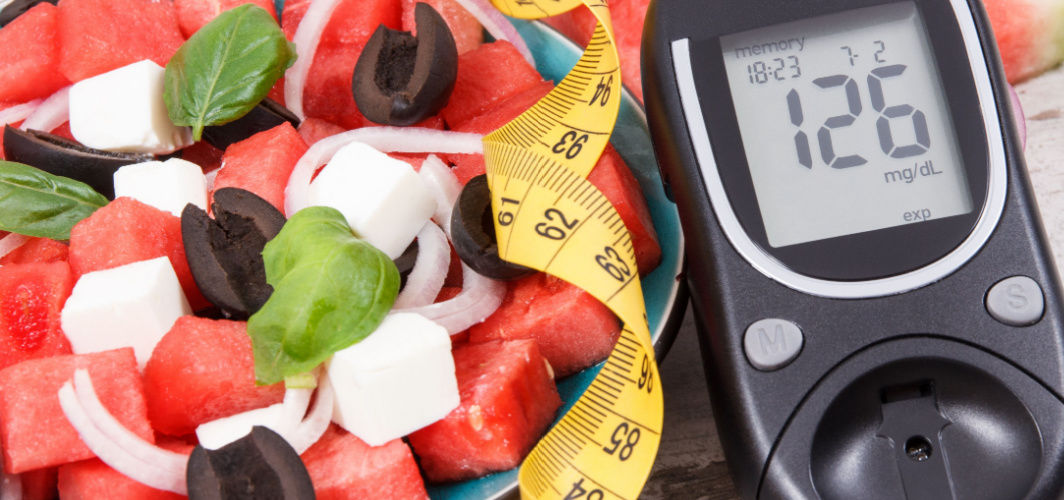Diabetes Management
How To Manage Diabetes In Summer?
5 min read
By Apollo 24|7, Published on - 12 June 2023, Updated on - 14 June 2023
Share this article
0
1 like

The summer season brings along unique challenges for diabetics. Notably, the tempting treats to beat the scorching heat can throw blood sugar levels off balance, making it crucial to have a management plan in place. In this blog, we've covered tips and strategies to help you navigate the summer by effectively managing your diabetes.
Why Have A Separate Diabetes Management Plan During Summer?
Having a separate management plan for diabetes during summer is crucial due to several reasons, some of which include:
- High temperatures and physical activity affect blood sugar levels, which if not managed effectively, may lead to complications. Apparently, excessive heat can cause the blood vessels to dilate and increase insulin absorption, potentially leading to low blood sugar. Similarly, an increase in physical activity increases insulin sensitivity in the body, resulting in low blood sugar levels.
- Excessive sweating causes dehydration, impacting insulin absorption and increasing hypoglycemia risk.
- Changes in eating habits impact blood sugar control. During summer, we drink more water and often take frequent meals a day, all of which can affect blood sugar levels adversely.
By having a specific plan for managing diabetes in the summer, individuals can effectively navigate these challenges and maintain optimal control of their condition.
Top 7 Tips for Diabetes Management in Summer
1. Stay Hydrated
- Proper hydration is important for people with diabetes, especially during the summer as dehydration can cause high blood sugar levels and increase the risk of complications.
- Carry a water bottle with you wherever you go out to ensure you have access to water at all times.
2. Plan Your Meals
- Eating diabetes-friendly meals is important for stable blood sugar levels, especially for elderly individuals managing type 2 diabetes.
- During the summer, focus on eating low glycemic index fruits, fresh vegetables, lean proteins, and whole grains.
- If you wish to indulge in cooling beverages and desserts to beat the heat, opt for beverages without sugar and fresh fruits for dessert.
Also read: Can Diabetics Eat Bananas?
3. Protect Yourself from the Sun
- People with diabetes are at risk of skin complications, which can get worse with sun exposure.
- Protect your skin by using sunscreen with an SPF of more than 30.
- Wear protective clothing, such as hats and long sleeves, to shield your skin.
4. Stay Active While Being Safe
- Regular physical activity is important for managing diabetes, but be safe during the summer.
- Choose indoor activities or exercise during cooler times of the day to avoid overheating.
- Take a quick shower at least 30 minutes after you exercise to remove all the sweat and grime that can be breeding grounds for fungal infection during the summer months.
- Keep candies or sugar pouches with you to prevent hypoglycaemia (sudden drop in blood sugar levels) during or post-exercising.
Also Read: The best exercises for controlling blood sugar levels
5. Be Mindful of Medications
- Take your medications regularly as prescribed.
- The summer heat can affect the strength and stability of some diabetes medications, like insulin. Follow the storage instructions on your medications.
6. Regular Blood Sugar Monitoring
- Checking your blood sugar levels regularly is important for managing diabetes, especially in the summer. Keep your blood sugar monitoring kit handy.
- Check your blood sugar levels regularly to know if you need to make changes in your diet, medication, or activity levels.
7. Prepare for Travelling
- Pack extra supplies like medications, glucose monitoring devices, and diabetic-friendly snacks in case of delays or emergencies.
- Look up healthcare facilities in the area you'll be visiting and keep a list of emergency contacts with you.
When Should You Consult A Doctor?
You should consult a doctor if you experience:
- Persistent high or low blood sugar levels that are difficult to manage
- Frequent episodes of hypoglycemia or hyperglycemia
- Significant changes in insulin requirements
- Unexplained weight loss or gain
Conclusion
To summarise, managing diabetes during the summer requires proactive planning and mindful choices. By following the above-mentioned tips to manage diabetes, you can enjoy a healthy and active summer season. For more information, consult our specialists.
FAQs
1. Do blood sugar levels increase in summer?
Blood sugar levels do not necessarily increase in summer, but managing diabetes during summer can be more challenging due to factors like heat, dehydration, and changes in routine.
2. Do diabetes get worse in summer?
Diabetics need to be extra cautious during summer to ensure their blood sugar levels are within limits. Moreover, irrespective of the weather, the management of diabetes depends on various factors, including individual health, lifestyle, and access to resources.
3. What is the easiest way to manage diabetes?
The easiest way to manage diabetes is to maintain a healthy lifestyle, including regular exercise, eating a balanced diet, taking proper medication adherence, monitoring blood sugar levels, and seeking medical guidance whenever needed.
4. What foods should diabetics avoid in summer?
During summer, diabetics should avoid sugary drinks, desserts, and refined, deep-fried, and fatty foods. They should opt for a balanced diet of whole grains, lean proteins, healthy fats, fruits, and vegetables.
5. What fruits can diabetics eat in summer?
The summer fruits that diabetics can eat in moderation include guava, papaya, watermelon, and muskmelon. Mango, banana, grapes, pineapple and lychee can also be consumed, but in small portions.
Medically reviewed by Dr Sonia Bhatt.
Diabetes Management
Frequently Asked Questions
What fruits can diabetics eat in summer?
What fruits can diabetics eat in summer?
Leave Comment
Recommended for you

Diabetes Management
Stress and Kidney Disease: Is There a Relationship?
In a recent study, scientists concluded that stress-related disorders can increase the risk of developing acute kidney injury and chronic kidney disease.

Diabetes Management
Insulin Therapy for Diabetes: Separating Myths from Facts
Insulin treatment may not lead to weight gain. In type 2 diabetics, undergoing insulin treatment, weight gain is frequently caused by the improved blood glucose control and higher effectiveness in utilising glucose. Insulin itself does not directly cause it. The initial weight increase frequently stabilises with time, proper diet and exercising.

Diabetes Management
Continuous Glucose Monitoring: How Does it Help?
CGM is a device that helps individuals with diabetes track their glucose levels continuously. A tiny sensor is inserted under the skin to measure glucose in the interstitial fluid. It helps individuals monitor glucose levels throughout the day and night, thereby allowing them to improve their HbA1c levels, reduce hypoglycemia events, and assess the impact of diet and exercise on glucose levels.
Subscribe
Sign up for our free Health Library Daily Newsletter
Get doctor-approved health tips, news, and more.
Visual Stories

8 Fruits That are Incredibly Healthy for Diabetes
Tap to continue exploring
Recommended for you

Diabetes Management
Stress and Kidney Disease: Is There a Relationship?
In a recent study, scientists concluded that stress-related disorders can increase the risk of developing acute kidney injury and chronic kidney disease.

Diabetes Management
Insulin Therapy for Diabetes: Separating Myths from Facts
Insulin treatment may not lead to weight gain. In type 2 diabetics, undergoing insulin treatment, weight gain is frequently caused by the improved blood glucose control and higher effectiveness in utilising glucose. Insulin itself does not directly cause it. The initial weight increase frequently stabilises with time, proper diet and exercising.

Diabetes Management
Continuous Glucose Monitoring: How Does it Help?
CGM is a device that helps individuals with diabetes track their glucose levels continuously. A tiny sensor is inserted under the skin to measure glucose in the interstitial fluid. It helps individuals monitor glucose levels throughout the day and night, thereby allowing them to improve their HbA1c levels, reduce hypoglycemia events, and assess the impact of diet and exercise on glucose levels.